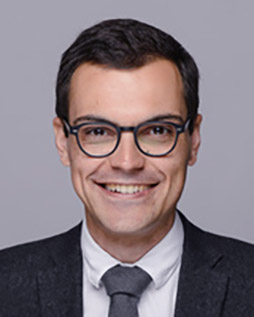
Mario Haim is Junior Professor at the University of München. Haim mainly focuses on journalism studies but also reaches out to political communication and health communication, yet almost always with a strong emphasis on computational communication research. As such, he has conducted studies on automated journalism, the diffusion of online news, influences of audience analytics on digital journalism but also on political informationseeking, the provision of digital health information, as well as on computational methods. Mario gained his PhD at LMU Munich in 2018 with a dissertation on the influences of audience analytics on various news outlets. He studied Communication in Augsburg, Munich, and Helsinki, and he also holds a vocational degree in Information Science.
DJRG Fellow, October 2019
Title and abstract
The Social Construction of Journalism Studies
Investigating Algorithmic Content Curation in an Age of Polarization. Computational journalism, that is, the „finding, telling and dissemination of news stories with, by, or about algorithms” (Diakopoulos & Koliska, 2017, p. 810), has gained lots of traction over the last couple of years. Phenomena, such as automated journalism, the influence of audience analytics, filter bubbles and echo chambers, the diffusion of so-called “fake news,” or the use of news within algorithmically curated information environments have driven both public debate and academic research. Circling around theoretical ideas of personalization and polarization, datafication and algorithmic curation, this presentation will try to summarize current findings and pinpoint academic shortcomings within the broad and fragmented field of computational journalism.
To account for the current theoretical streams of thought and findings on the one hand, but also for the methodological challenges in this field on the other, the presentation will be twofold. Both parts (approximately 45 minutes each) will stand for themselves with several links between them. Moreover, both parts will not require previous knowledge. The first part will provide an overview of the status quo of computational journalism and give a thorough summary on ongoing research endeavors toward personalization and polarization of online news and online news consumption. Building upon a variety of angles, the presentation will give a literature review, identify current shortcomings, and lay out a plan for a new research project that tries to incorporate aforementioned findings and challenges.
The second part will put a strong focus on methodological enquiries into algorithmically curated information environments, Mario Haim, oktober 2019such social media, news aggregators, or search engines. Challenged by increasingly personalized information environments and uncooperative intermediaries, possible methodological approaches will be presented and discussed, including but not limited to API access, web scraping, agent-based testing, and computational observation. The presentation will end by presenting a roadmap for a robust and professionalized, open and connectable computational communication research.
Selected publications
- Haim, M. & Nienierza, A. (2019). Computational observation: Challenges and opportunities of automated observation within algorithmically curated media environments using a browser plugin. Computational Communication Research, 1(1). https://dx.doi.org/10.31235/osf.io/xd63n
- Scherr, S., Haim, M., & Arendt, F. (2019). Equal access to online information? Google’s suicideprevention disparities may amplify a global digital divide. New Media & Society, 21(3), 562–582. https://dx.doi.org/10.1177/1461444818801010
- Haim, M., Kümpel, A. S., & Brosius, H.-B. (2018). Popularity cues in online media: A review of conceptualizations, operationalizations, and general effects. Studies in Communication and Media, 7(2), 186-207. https://dx.doi.org/10.5771/2192-4007-2018-2-58
- Haim, M., Graefe, A., & Brosius, H.-B. (2018). Burst of the Filter Bubble? Effects of personalization on the diversity of Google News. Digital Journalism, 6(3), 330-343. https://dx.doi.org/10.1080/21670811.2017.1338145
- Haim, M. & Graefe, A. (2017). Automated news: Better than expected? Digital Journalism, 5(6), 1044-1059.